Boa constrictros are bigger than Ball Pythons, but by how much? Let’s take a detailed look at Boa constrictor vs Ball Python size to find out…
Last updated on April 7th, 2023 at 09:44 am
Boa Constrictors and Ball Pythons are both popular pet snakes. If you are thinking about which of these two reptiles will be a better pet for you, a comparison of size, food habits, and other differences will make it easier to decide.
Both snakes are quite similar in appearance to novices. That often confuses people to distinguish between each other. Both these reptiles are highly desired constrictors.
Boa Constrictor Size
Adult male Boa Constrictors are usually smaller than the females in length as well as girth. Most newborn Boa Constrictors are around 1ft – 1.5ft or 30cm – 45cm long.
Boa Constrictors have different lengths depending on their subspecies. Generally, a mature male grows between 1.8 m and 2.4 m or 6 ft and 8 ft. The full-grown female snakes are usually 2.1m to 3m or 7ft to 10 ft long. However, boa constrictors of 13 ft to 18 ft have also been reported.
Although large, boa constrictors are smaller compared to most python species – asides from Ball Pythons, that is. If you are looking for a pet snake that’s slightly larger than a female Ball Python, a male Boa Constrictor could be an appropriate choice.
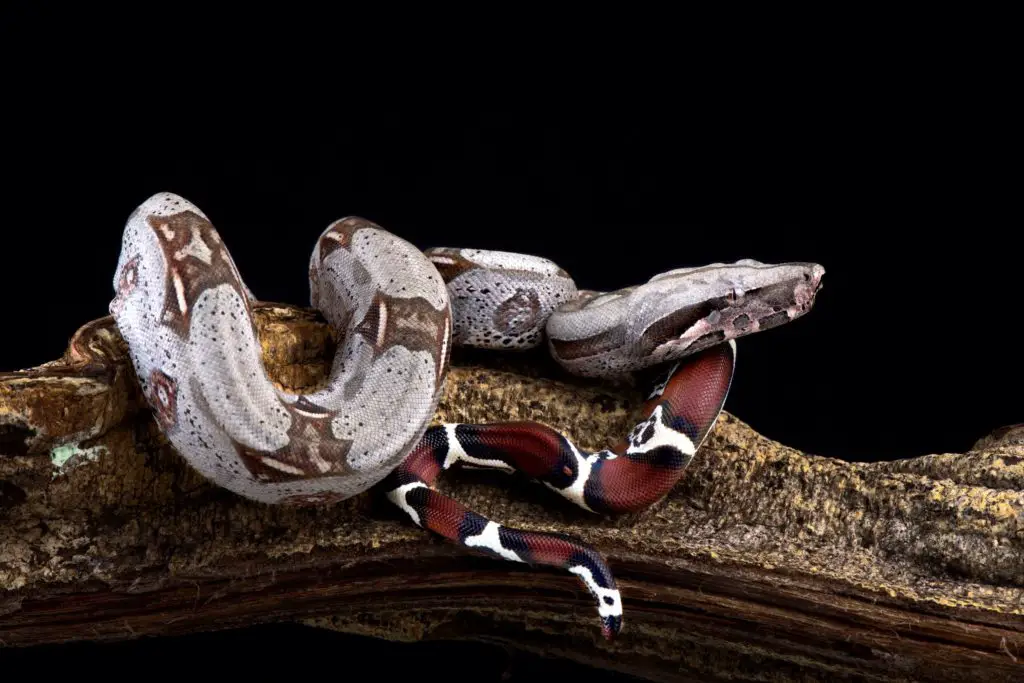
Are Boas Friendly?
There are several myths about Boa Constrictors that need to be busted before you think of keeping one as a pet.
These snakes do not have a heat-sensing pit organ and thus cannot feel the heat coming out from your face when you hold it in front of your face. A Boa Constrictor will only strike you in the face if it is annoyed with you.
Why the face? Because they think it is a sensitive area to bite. So, never hold a boa in front of your face.
In case a Boa Constrictor shows aggressiveness or attempts to bite during handling, it means the snake is distressed and wants to be left alone. It is wise to return it to its enclosure before something unpleasant happens.
Boas make calm and quite scaly pets and are docile. However, their instincts of constricting around their prey cannot be ignored.
At times pet Boas might loosely wrap themselves around their handlers, not for crushing them but for some extra support. These snakes will not constrict you unless they feel threatened, alarmed, or falling.
At times though they can wrap themselves tightly around you while handling, which can become uncomfortable if you’re not confident around reptiles.
With regular handling, boas constrictors can learn to be comfortable and gentle around people. No matter what stories people tell, a Boa Constrictor can never be trained like a dog or a cat though.
They are quite tame, fairly low-maintenance snakes that will not take much of your time in terms of your daily care routine.
Boa Constrictors are especially easy to tame as babies if handled regularly and gently. Some of the young snakes may be nippy but there is nothing to worry about as their bites are harmless.
Ball Python Size
Ball Pythons often live more than twenty years and reach their full length only after two to four years under the right environmental conditions.
Ball Pythons are not among the largest Python species. They grow to an average length of 3ft – 4.5ft or 90cm – 137cm.
Although Ball Python hatchlings have an independent growth rate, most of them reach full matured size within four years of their life.
The female snakes are larger than the males. The longer body helps to keep their eggs. Most females grow to 3.5 ft – 4.5ft (106cm -137cm) while most of the male snakes grow to the length of 3ft – 3.5ft (90cm – 106cm).
However, some Ball Pythons can be huge and can grow up to a length of even 5.5ft (168cm).
The weight of male and female Ball Pythons may vary over the years. On average, mature males weigh 1200g-1800g and females weigh 1800g – 3000g.
A healthy captive weight depends on several factors besides feeding. Weight gain and obesity can be a problem for captive Ball pythons due to overfeeding.
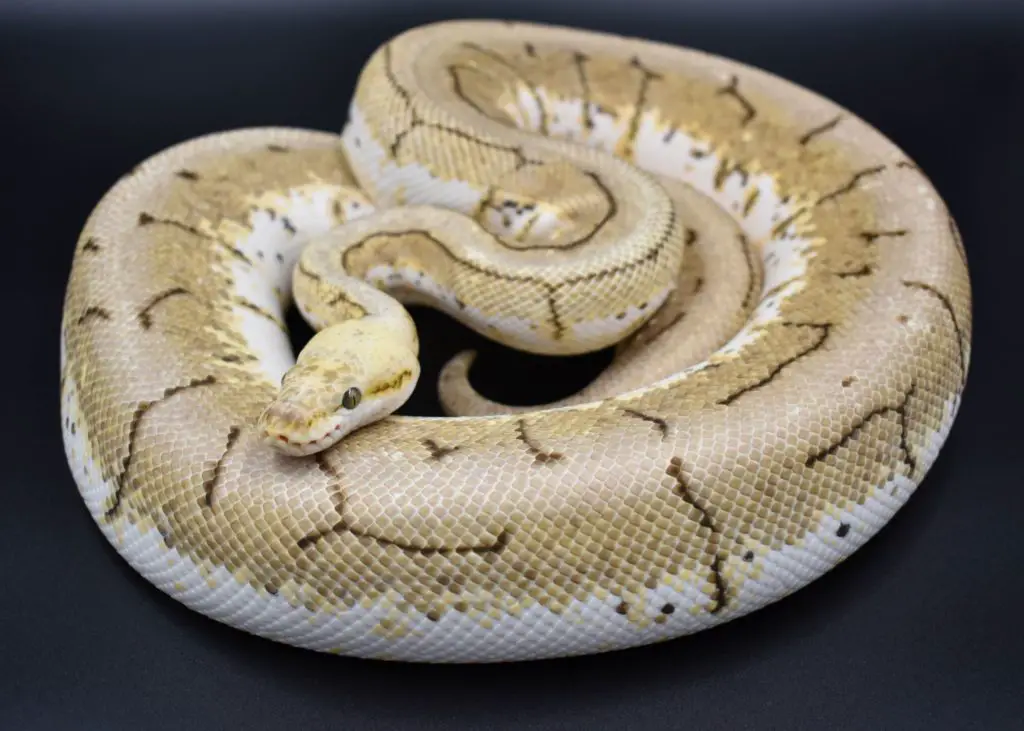
Is a Ball Python a Good Pet?
Ball pythons are attractive snakes. They usually come in combinations of brown, grey, and black markings. The pretty colouration and gentle nature make them rewarding pets.
There are various morphs of Ball Python. Some popular ones are –
- Albino
- Atomic
- Axanthic
- Banana
- Blackhead
- Bongo
- Cinnamon
- Clown
- Confusion
- Coral Glow
- Enchi
- Ghost
- Goblin
- Hurricane
- Lavender Albino
- Orange Dream
- Orange Ghost
- Pastel
- Piebald
- Pinstripe
- Puzzle
- Spotnose
- Xtreme Gene
- Yellowbelly
Each Ball Python morph has its unique appearance, clad with some incredibly unusual colours and patterns.
Ball Pythons are popular pets not just due to their striking appearance. These snakes are active and interesting creatures. They have gentle personalities, with quenchless curiosity.
Most of all, they are laid back, not aggressive like many other snakes, and are not the wriggly kinds that are difficult to handle.

Are Boas and Pythons Related?
Boas and pythons are members of two distinct snake families. Some studies suggest these snakes may have shared common ancestors seventy million years ago.
However, considering genetic factors, they are not close relatives.
As they look fairly similar, at the first glance, it is common to misidentify them. The two species share some similarities and differences.
Both snakes are large, stocky, non-venomous, and primitive species. Meaning both have lived on earth for millions of years.
The presence of two lungs, heavy skulls, vestigial legs, scales, and curved teeth are some similarities that the snakes share.
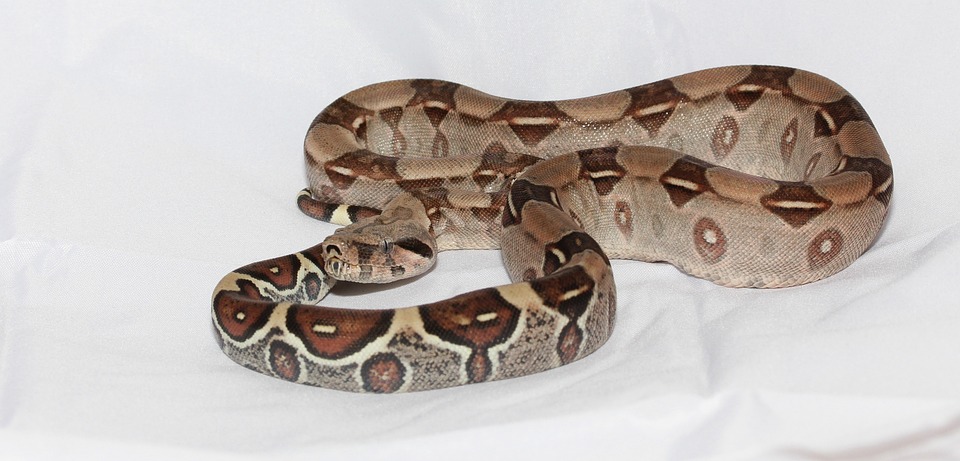
How Can You Tell a Boa Constrictor From a Ball Python?
Despite their likeness, Boa Constrictors and Ball Pythons have some basic differences in
- Natural habitat
- Reproduction
- Physical characteristics
Natural habitat
The Boa Constrictor belongs to the family Boidae, subfamily boinae. These snakes have a great variety of habitats.
They are found in various environmental conditions like deserts, cultivated areas, warm and wet tropical forests, and open savannas. They are mostly found in tropical Central and South America like northern Mexico and Argentina, and some islands in the Caribbean.
In the wild, Boinae snakes live in the western hemisphere, though old world species were previously included in the group too. Most thick-bodied boa constrictors are terrestrial but young Boa Constrictors are semi-arboreal.
Earlier three species of Boa were called “Boa constrictors”,. They were the Common Boa (Boa imperator), the Sonoran Boa (Boa sigma), and the Red Tail Boa (Boa constrictor).
The red tail Boa gets its name from the deep, mahogany red hue of its tail.
Ball Pythons belong to the family Pythonidae. These snakes are native to Sub-Africa. They like to live in grasslands and sparsely wooded areas.
Also known as Royal Pythons, the Ball Python is a constricting species of the python family. These reptiles are found in grasslands, open forests, scrublands, savannas, and areas with some shade.
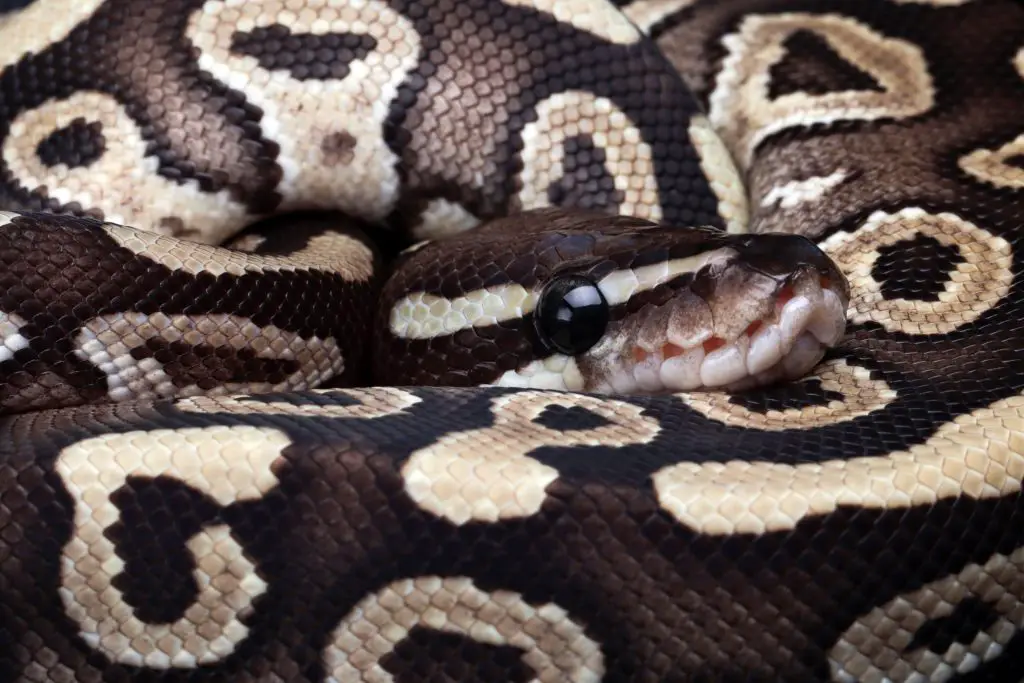
Reproduction
Boa Constrictors are ovoviviparous. That means the eggs are incubated and hatched inside the body of the female snake.
Ball Pythons are oviparous snakes. They lay their eggs and incubate them until the young ones hatch.
Physical characteristics
A Ball Python and a boa constrictor are both thick-bodied, large snakes that look quite similar and can be easily mistaken by beginners.
The bones in a boa constrictor’s head are more distinct compared to a Ball Python. A boa also has fewer teeth than a python. Both these snake species have two lungs.
Where they differ is mainly in the fact that most Boa constrictors get bigger. Also, Ball Pythons have seat-sensing labial pits around their mouths, which look like holes to an observer.
Another physical difference is body shape. A Boa constrictor has a cross-sectional body shape that looks like a loaf of bread, whereas a Ball Python has an almost round body.
Finally, Boas have much finer scales on top of their heads, whereas Ball Pythons have some large, plate-like scales on their rostrum (snout).

Is a Ball Python a Constrictor?
All pythons are constrictors. The Ball Python, one of the smallest among Pythons is a constrictor too. Moreover, out of all the snakes you see for sale as pets, at least 9 out of 10 are constrictors.
In fact, constriction is one of the three most common methods that snakes use to subdue prey. These are venom, constriction, and live swallowing. That’s right – some snakes just swallow their prey while it’s still moving!
In contrast to that method, constriction is a lot safer for the snake, and it’s probably slightly less energetically costly than making venom.
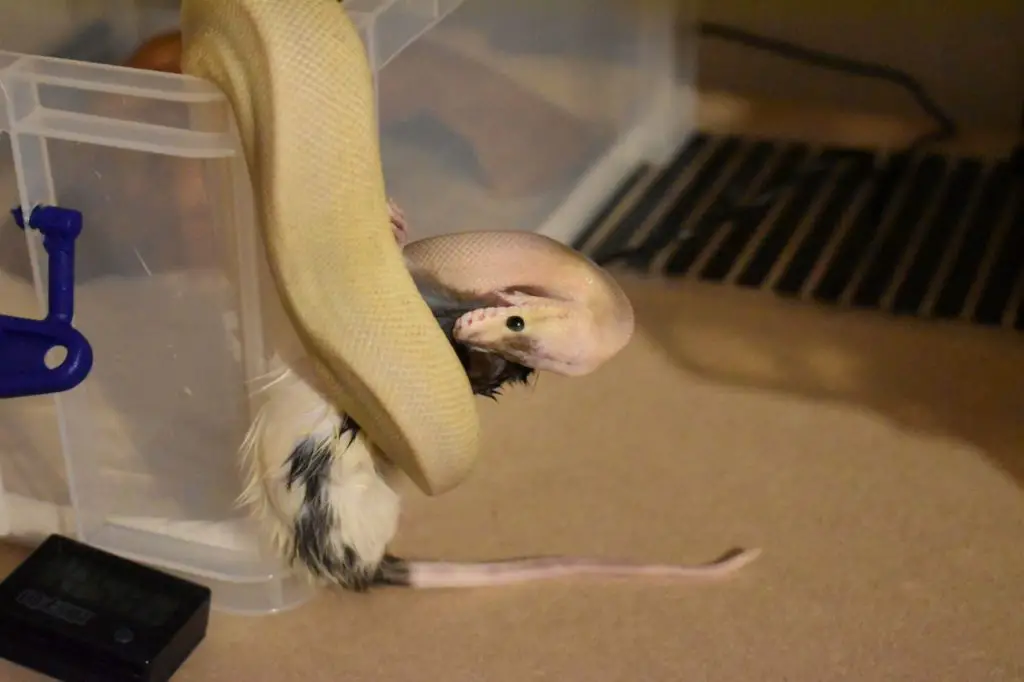
Are Boas Good Beginner Snakes?
Boas are large snakes. That’s one reason they are not usually recommended for beginners. It needs a substantial amount of strength to handle a boa. Experienced and confident handlers can hold them more comfortably.
Additionally, big snakes mean more mess and more germs. Boa Constrictors can make a mess that needs immediate cleaning. That can mean a lot of work which may not be easy for beginners.
Boa Constrictors make good pets as they are hardy, peaceful, and have a long life. When allowed enough space, right diet, health care, and proper heat and humidity, they can be your companion for more than 20 – 30 years.
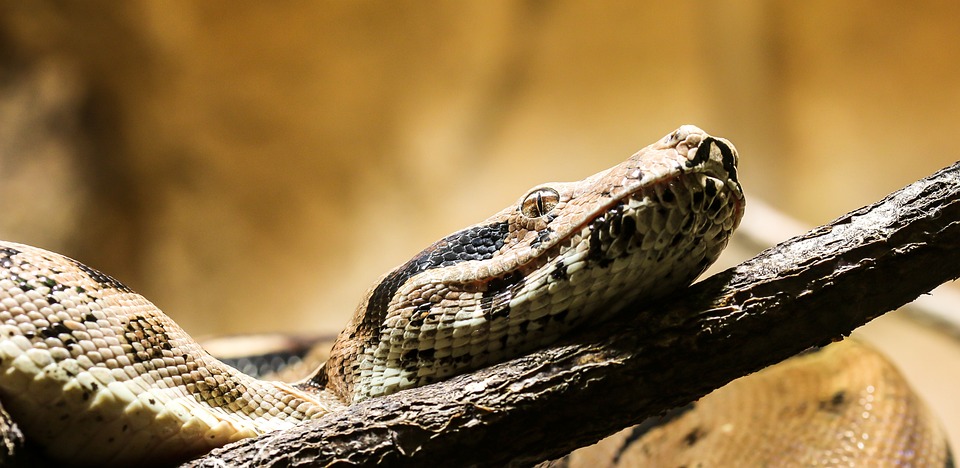
Are Ball Pythons More Popular Because of Their Size?
Ball Pythons are surely popular pets due to their size. It’s one of the smallest pythons and makes great pets.
Their size allows convenient caring and handling compared to other pythons. These snakes are generally friendly and come in a range of beautiful colours.
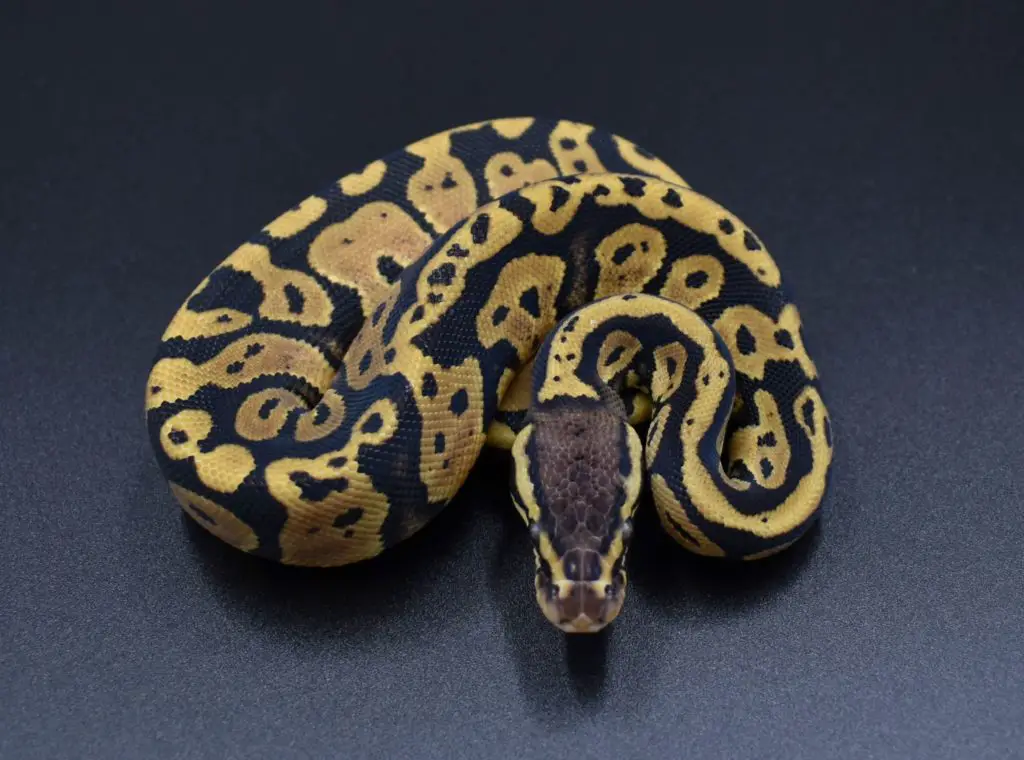
What is a Better Pet a Boa or Python?
Boas and Pythons both make good pets for those who like to keep large snakes. Both are tame and docile when cared for and handled properly.
A Boa constrictor is a less picky eater compared to a Ball Python and has a slower metabolism. Meaning they will need less feeding frequency.
An adult captive Boa Constrictor will be happy with a large rat every one to two weeks. They can also be fed chicks or quails to add some variety to the diet.
Pythons are less active compared to boas. If you like a pet that moves more and is curious, a Boa Constrictor is a better choice for you.
Boas are not aggressive towards their handlers unless irritated. Rather than putting up a fight, they would prefer to shy away and go into hiding.
If the size is your concern, Boa Constrictors in captivity are more likely to grow larger than Ball Pythons.
Both snakes have moderate care needs, require exercise of around 20 minutes per week, are family-friendly, and have easy diets. Life expectancy is around thirty-five years for both depending upon the subspecies.
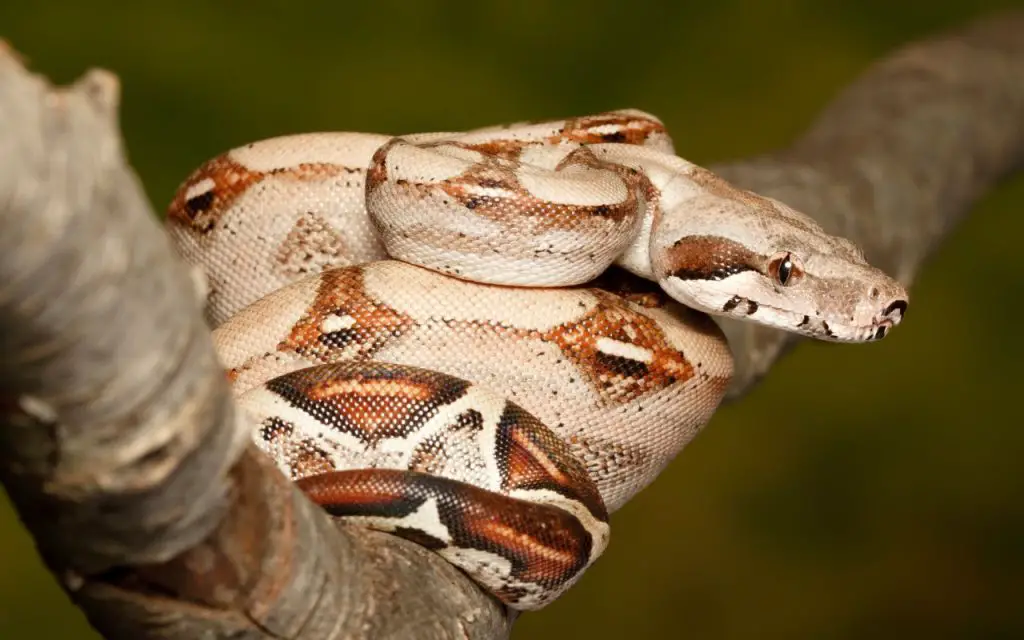
FAQ Relating to Boa Constrictor vs Ball Python Size
Is a Boa Constrictor Bigger Than a Ball Python?
Generally, pythons are larger than boas but when it comes to the Ball Python things are a little different. A Boa Constrictor is likely to be larger than a Ball Python in captivity.
Do Pythons or Boas Get Bigger?
There are 40 species of true boas and 31 species of pythons. In general, most pythons are bigger than boas but not always.
The Reticulated Python is the largest snake in the world growing to around 6.25 metres in length. The Pygmy Python is the smallest of them all reaching a length of only 24 to 30in length.
The largest Boa Constrictor caught to date was 18 feet long (allegedly). The Caulker Cay Boa is the smallest variety of Boa that grows to only about two feet.
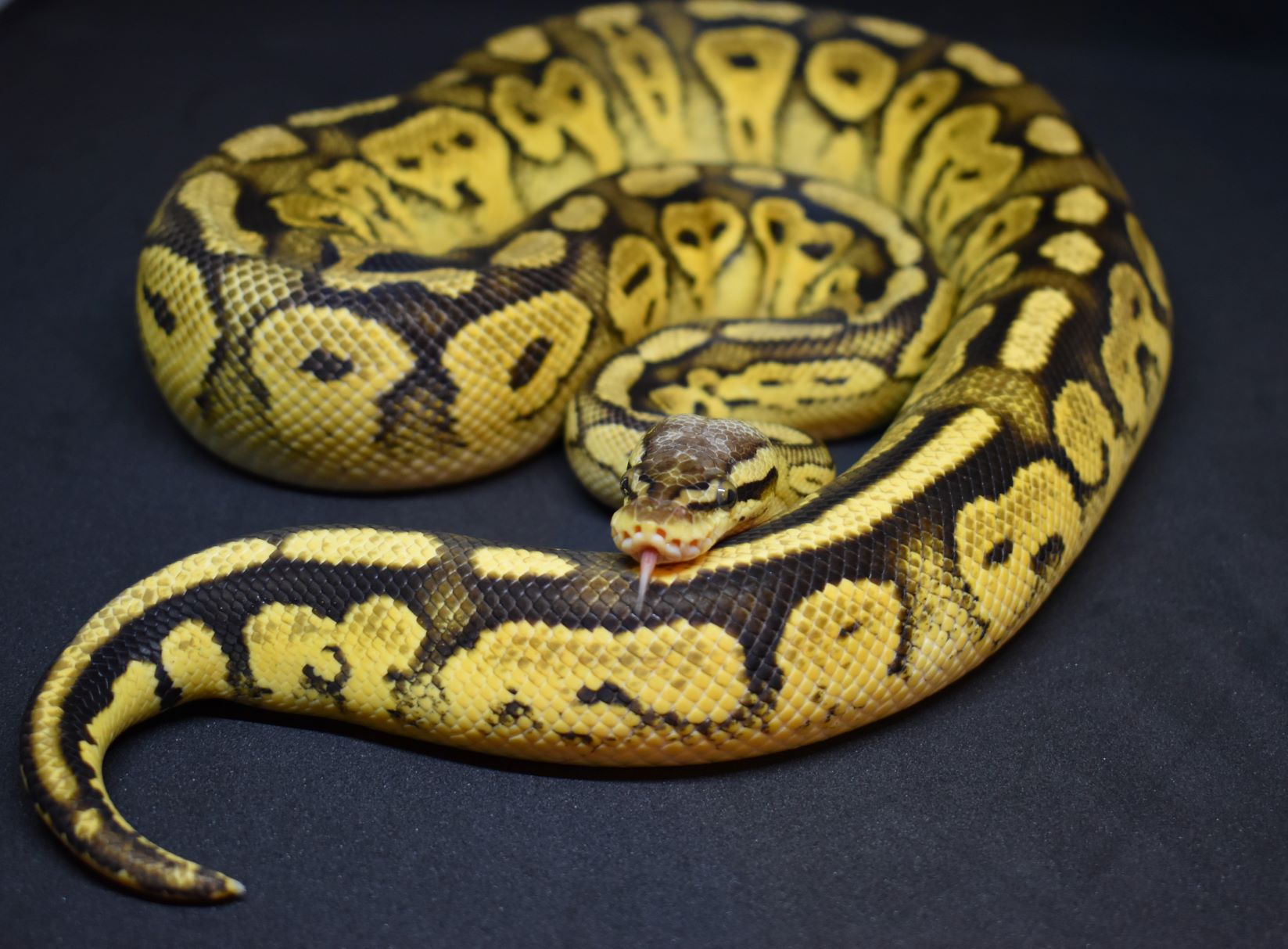
Is a Boa Constrictor the Same as a Ball Python?
No, a Boa Constrictor is not the same as a Ball Python. Both are different snakes belonging to different families.
They look somewhat similar and share some similar characteristics but are completely different snakes. Both snakes are constrictors though.
Both Ball Pythons and Boa Constrictors would prefer to escape when they are confronted, as opposed to attacking. However, in difficult situations when they feel threatened, a boa can be more defensive than a python.
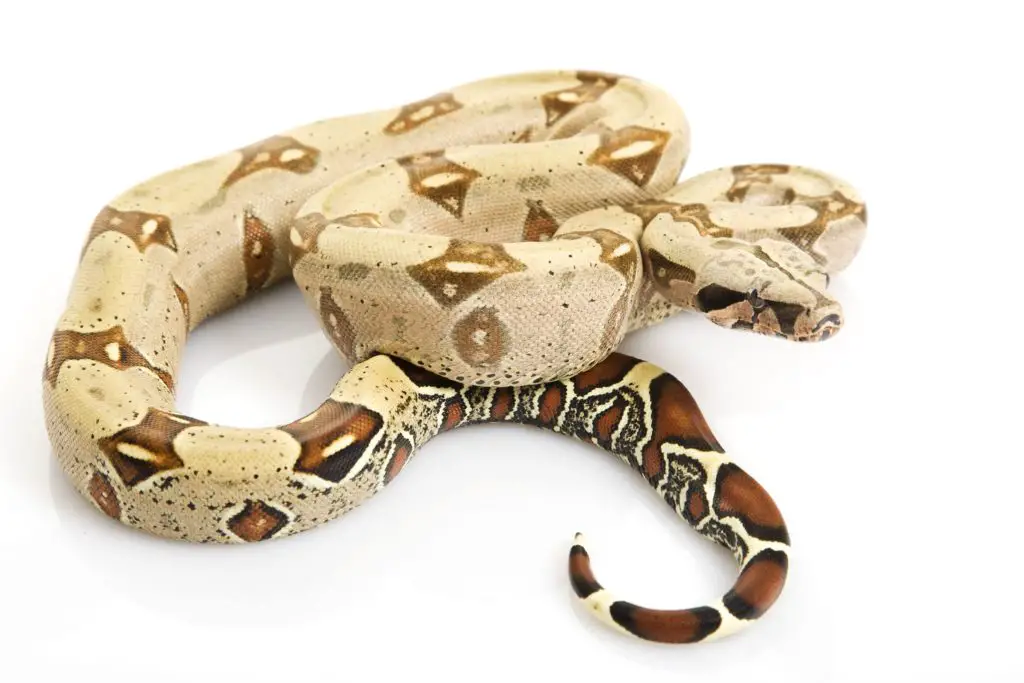
How Can You Tell a Boa Constrictor From a Ball Python?
Although Boa Constrictors and Ball Pythons are fairly alike, certain differences help in distinguishing them.
The physical characteristics are the most important cues that allow telling these snakes apart.
Boas Constrictors have fewer bones in their head and also fewer teeth compared to Ball Pythons. Pythons are oviparous snakes that lay eggs while boas are ovoviviparous. That means they give birth to live hatchlings that develop from an egg-like membrane incubated inside the female snakes.

